Sonic Kayaks
The co-founder of Then Try Thisdiscusses how kayaks fitted with environmental sensors facilitate recreation for local visually-impaired kayakers and provide necessary data for research.
Excerpts from Recovering Experts
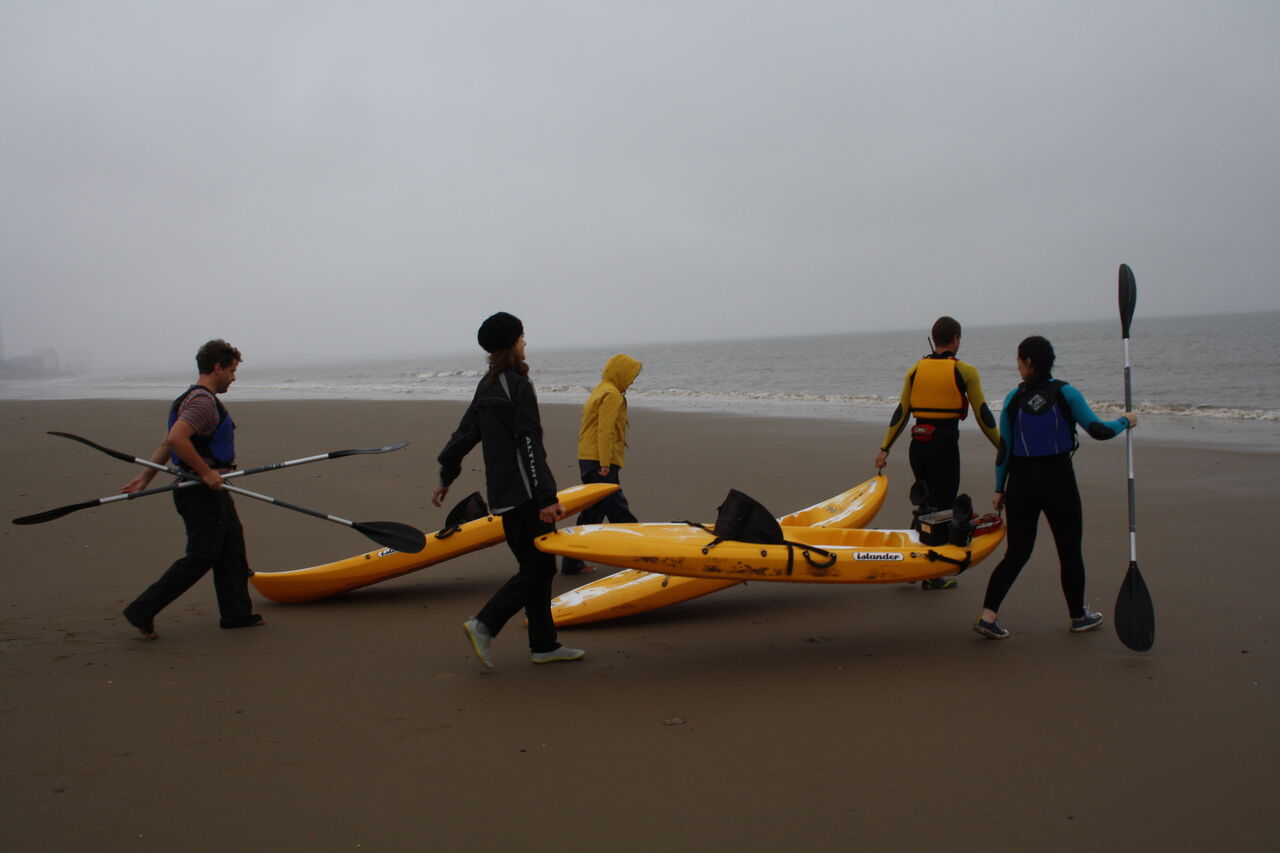
Part 1: Tools for understanding and engaging with the environment
Maya: What do you need to make a Sonic Kayak? And why make a Sonic Kayak?
Dave: To make the latest one is quite a lot—a lot of different sensors, some of them you have to make yourself, and some you need to buy. But to start with, they were simpler, we just had a GPS and a temperature sensor. Just to test what was going on. Oh, and a hydrophone. The hydrophone is probably the most important thing, or the most interesting thing. You could get away with just a hydrophone and a Zoom recorder, headphones, and you’d get quite a good Sonic Kayak experience, I think.
Maya: Have you overheard—or maybe not overheard, heard—any marine flora with your hydrophone? Any seagrasses or seaweeds scootin’ about?
Dave: Well, yes and no. Most of the places that we’ve been doing this are pretty damaged, so we are more interested in recording underwater noise pollution from things like boat engines. What we do hear around in Cornwall, there is quite a lot more life if you just escape the built-up areas. We’ve heard what we were told might be snapping shrimp, when they do their thing, cavitation, I think, in the water, and it makes this sort of crazy clicking sound Shrimp sounds feature in The Noisiest Guys on the Planet by Jana Winderen. When we were testing it, I took the hydrophone down and, just put it in the water to see what I could hear in the evening. I saw a seal swim past and I heard this really weird sound and I thought, “I’ll record that, it must be something that was associated with the seal”. We sent it to all of the audio researchers that do marine audio stuff, and they were like, “No it’s nothing to do with the seal, it’s some kind of fish! We don’t know what it is”. So you just, one evening, drop a hydrophone in the water and you record something “new to science”! *laughs* That’s interesting, that it’s one of these areas where we know so little.
All the places that people kayak are really important, in that they’re often where—tidal estuaries and things like that—the fish breed, so it’s where all the impacts of climate change are happening. But if it’s not open ocean and easily visible by satellites, you can’t really get anything on it. So they can put out stationary buoys that are doing 24-hour temperature measurement or doing sound recording, but they’re often expensive so you can’t get detailed spatial information as you’d need so many of them. So it’s really a case that people who are kayaking can provide this.
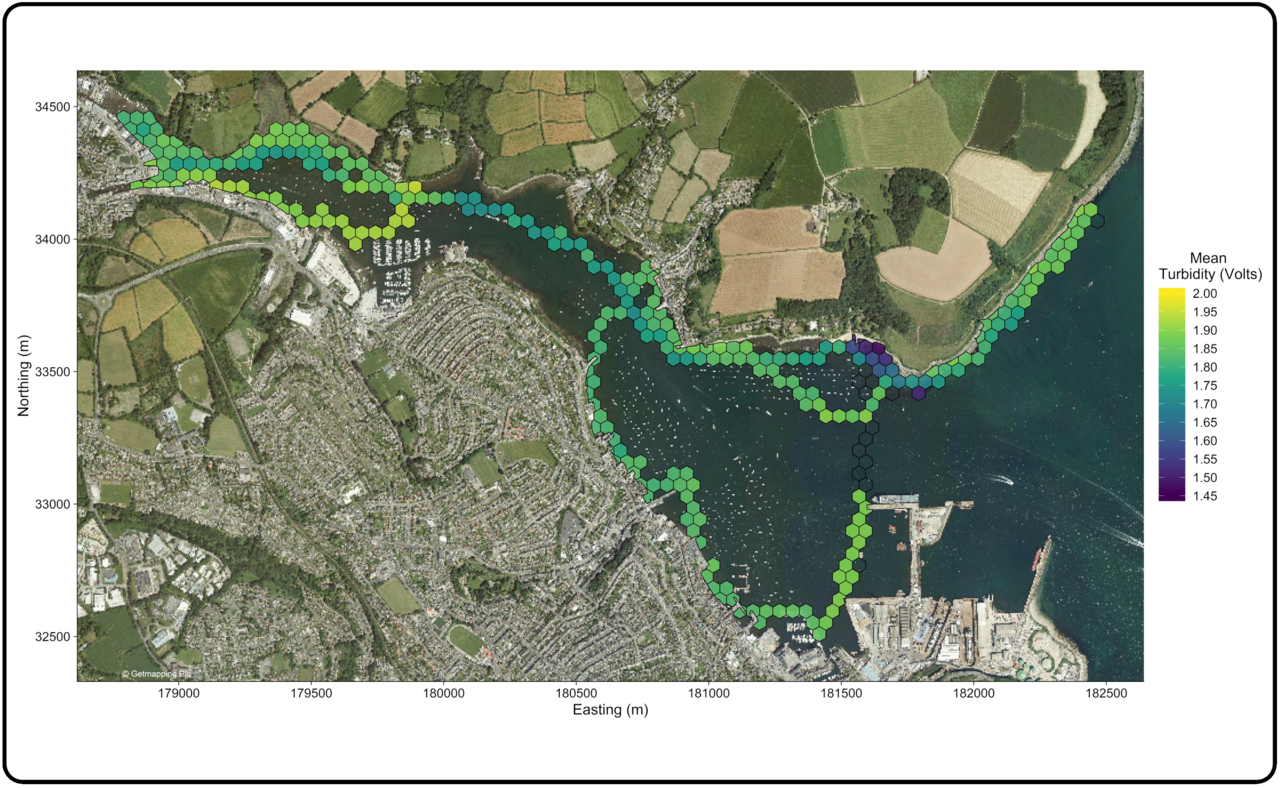
Maya: Could you speak to the possibilities that those relationships between art and science open up, as far as your justice-oriented work goes.
Dave: It becomes really apparent that the whole idea that arts and sciences are different is a very, very recent concept. You only have to go back a couple hundred years and they were the same thing; you’d have the academy of the arts and sciences and you’d have this understanding that they’re trying to approach the same problems and they need to be in the same room together. With the kayaks, the best thing there is that often we’ll have people interested in computer music, or experimental sound, and then scientific researchers, but there’s a third group that we never really realized before, which is all the kayak enthusiasts! And they’re in their comfort zone. The kayak instructors are just amazing to work with, and constantly teaching you, how to triangulate to figure out where you are when the GPS doesn’t work, and all this kind of knowledge. And it means that the musicians and artists and scientists involve are put on the same level, which works quite well.
I think for our approach, it’s been much more to flip things around a little bit and using arts or different approaches to science to challenge science to ask new questions and put researchers out of their comfort zone. And you definitely do that on a kayak! *laughs*
Maya: What role does collaboration play in this work for you all?
Dave: We’re much more motivated by who we’re working with than what it is. We couldn’t redo the Sonic Bikes project in Cornwall because it’s really hilly here and it’s just not fun to cycle, so we had a joke that we put them on kayaks and then we thought, “Okay we’ll apply for a little bit of money, run a little workshop, just run the bike system on a kayak and see how people like it”, and then very quickly it became apparent that where we were doing that, it was incredibly difficult for marine researchers to get fine-scale data on things like water temperature. And so suddenly all the people we were collaborating with were researchers, so that was more like, “Well clearly we need to be doing a lot of this”, but maintaining the connections with Kaffe Matthews and keeping up the sonification and experimental music side of things.
There’s a local kayak club that specializes in working with visually-impaired people, giving them confidence out on the water, and there was one day when Claire Eatock, who runs that group, walked into our studio with a funder and said, “We’ve seen what you’re doing, and we want you to apply with us for this money”. Which never happens!
And they were just brilliant, because that wasn’t something that we’d ever have thought of. I was quite dubious it was going to be good enough for that group of people to use, especially with safety, and suddenly having to think about the accuracy of the GPS and things. But that was something that she saw, so we went along with it. And the visually-impaired kayakers that she was working with told us how they wanted to use it, or how they could use it, and they played around with it, and eventually managed to use it for direction-finding. So I think the best projects are where you don’t really think too much about what it is, you just think, “This person is really interesting”, or, “this group of people is really interesting, we’ll just see where it goes, because it’ll be fun even if it doesn’t work”.
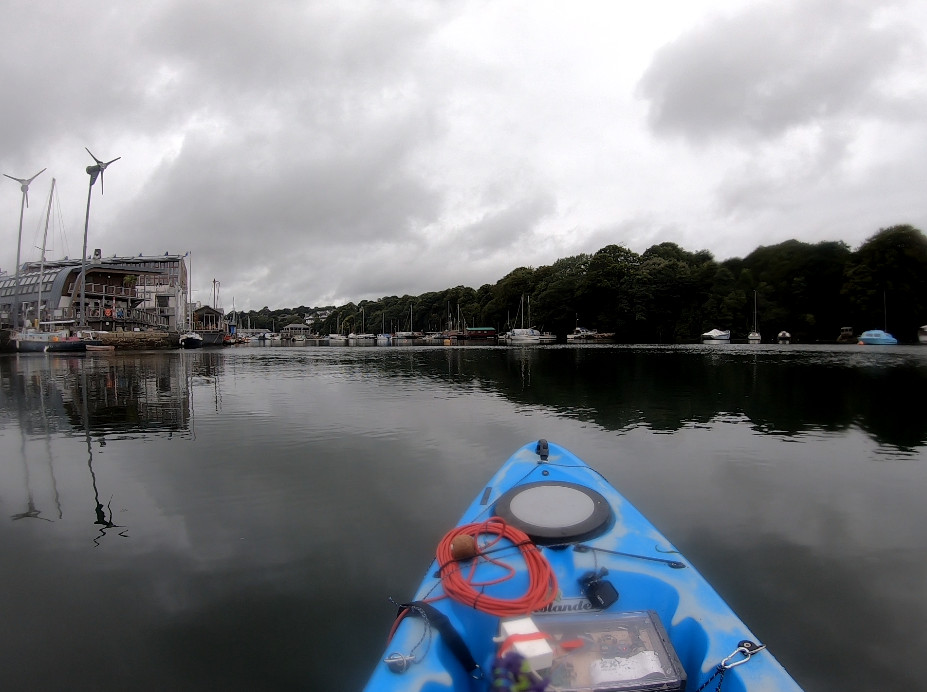
Part 2: Instruments for sound art and environmental mapping
Maya: I’m curious about the biggest obstacles and challenges in adapting the bikes to the kayak context, as well as what kind of different knowledges and expertise were involved.
Dave: So the electronics, the programming, that was all fine. The absolute nightmare was waterproofing.
Maya: Yeah, I was wondering! *laughs*
Dave: *Laughs* And we learned that the hard way, because the first time we did it, it was a disaster. We put them in waterproof boxes. We put sealant around the cables, I think. But the speakers, how do you waterproof speakers? We just had them open but with a top, like some horns on them, that would protect them from splashes and things. So it was splash-proof, pretty much. And on the first day we did a public event, it was beautiful sea, it was calm, everything was wonderful. And then on the second day it was a little bit too rough, and the first group of people were really keen, so the instructors were like, “Okay, let’s take them out anyway”, and they all capsized, and it was the worst. We just had bits of stuff washing up on the beach. It was more worrying that the people were in the water but we had everything wash up on the beach. It’s a really physically demanding project, because you spend all your time carrying kayaks around, setting up tents, talking to people as they’re putting wetsuits on and stuff like that. And suddenly to have all of this happen…
And then with building our own turbidity sensors, it’s all about encasing all the electronics in resin, which is a whole other kind of world of materials that we had to pick up and then teach people about, because they’ve been building them. So definitely the majority of it was the waterproofing; it was also just stuff with building things for that environment and fitting on lots of different types of kayaks. We realized that you can make your own straps. And then it turns out that that saves people a lot of money because it’s really expensive buying all the webbing for the seats and all of that kind of thing but it’s really easy to make it yourself.
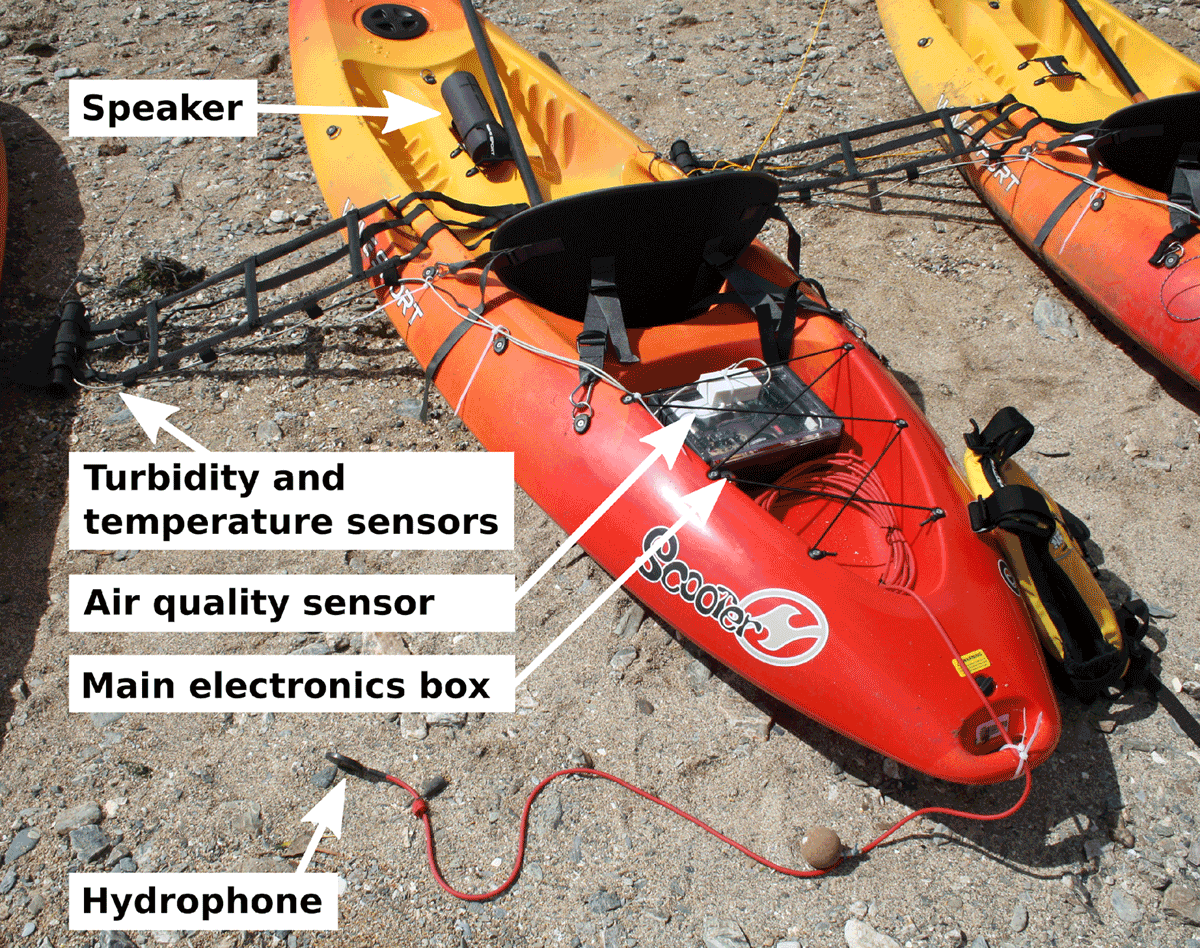
When we work with the visually-impaired people, everything has to be completely safe, so we had to run tests where the instructors would take the system out and do rolls with it and capsize it deliberately and check that it all worked. And they happened to do that on the day when it was one of the worst storms coming over the country. And because they’re all really professional kayakers that do this as sort of a side job, they’re like, “Yeah of course we’re going out!” So it was good then, because then we actually had it properly tested by people who weren’t scared of doing it.
Griffiths et al. New Water and Air Pollution Sensors Added to the Sonic Kayak Citizen Science System for Low Cost Environmental Mapping.
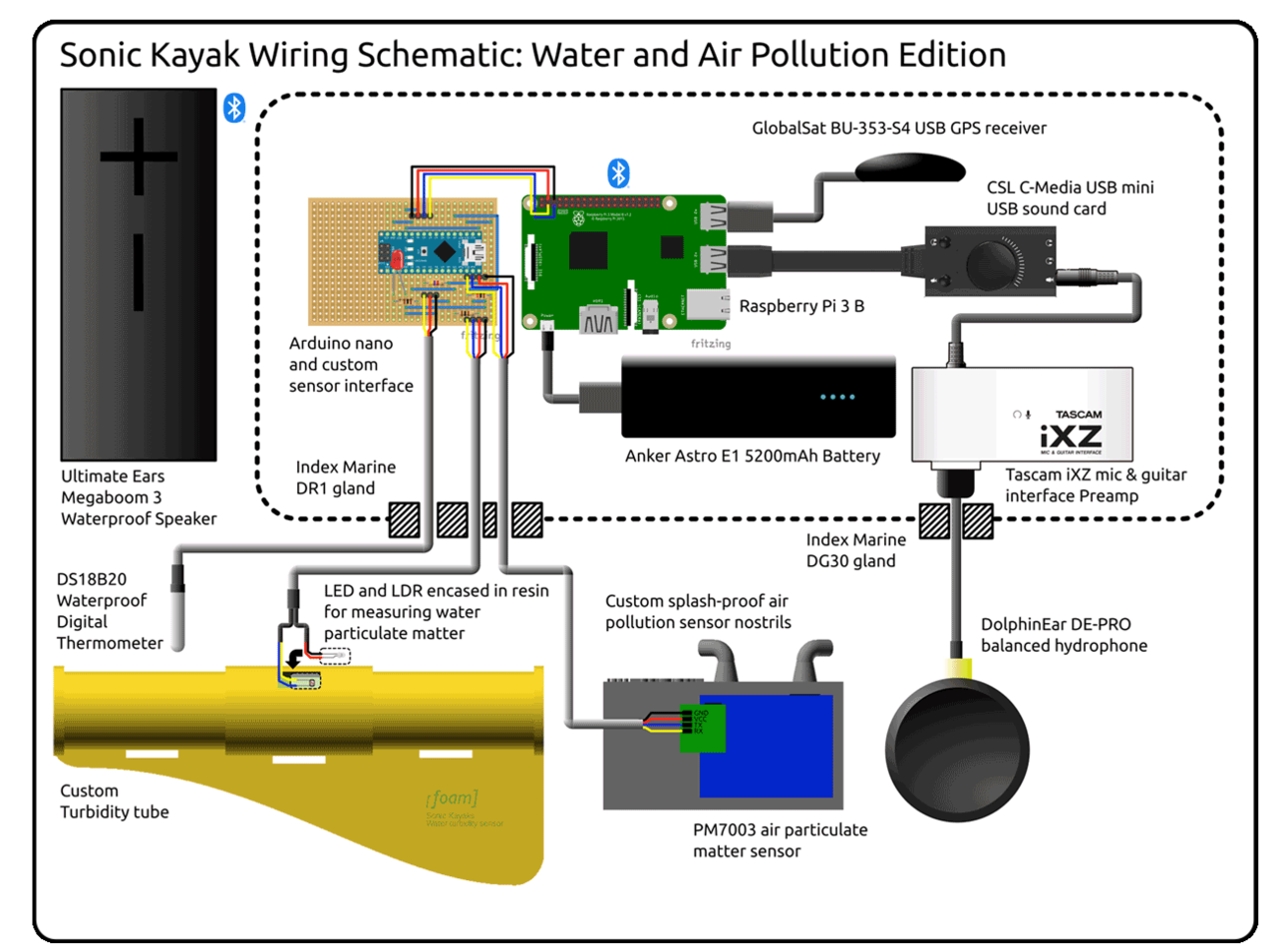
❧